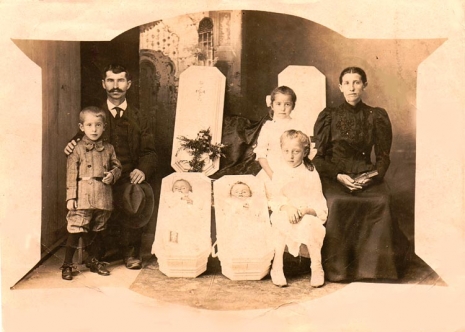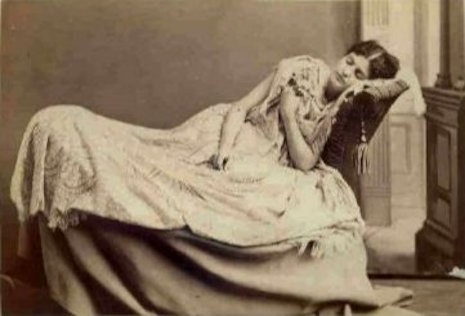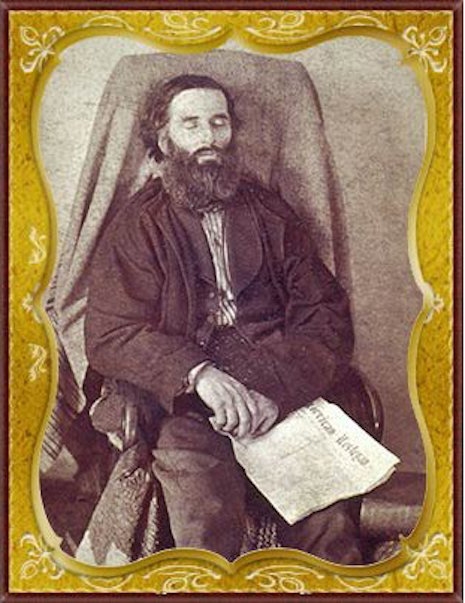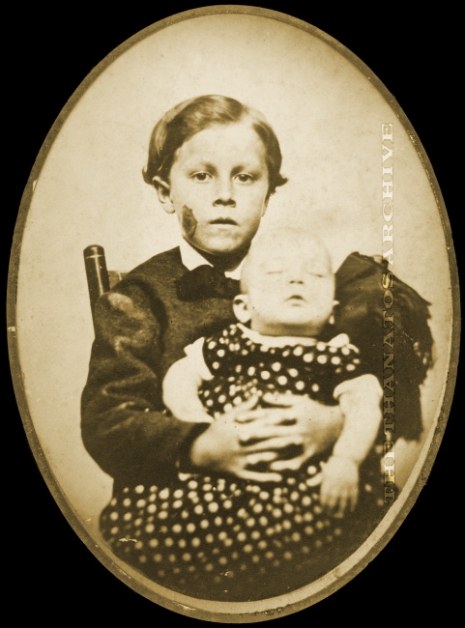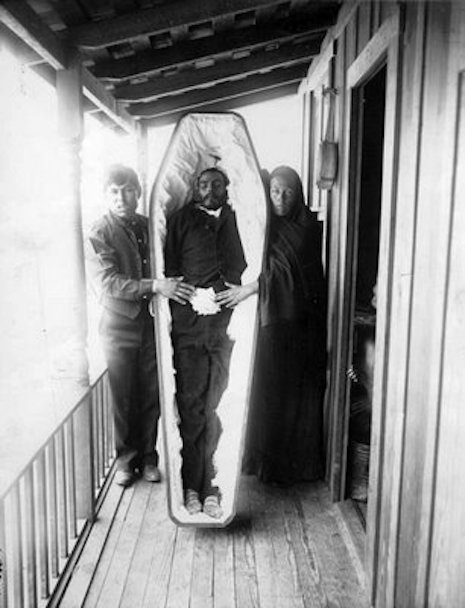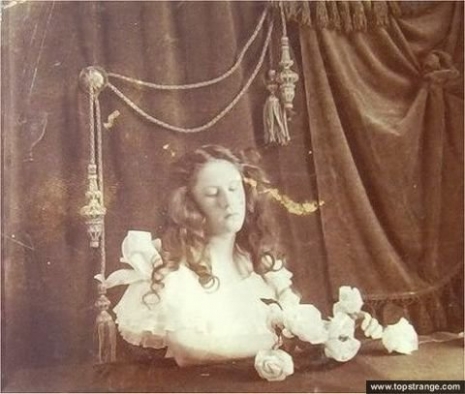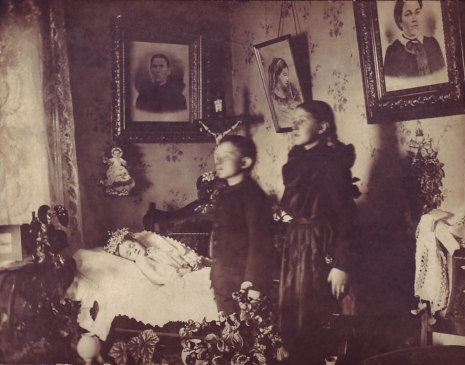
It’s difficult for the modern mind to apprehend the importance of the invention of the daguerrotype in 1839. All of a sudden, people had the capacity to retain a perfect image of a loved one—it must have been mind-blowing.
As the cost of the technology went down, the practice of using photography to execute a proper remembrance of loved ones who had passed on must have been irresistible. Unlike today, when just about anyone you’d be likely to meet has been photographed countless times, in the late 1800s and early 1900s a person might live his or her whole life without leaving behind a photographic portrait.
Enter the practice known as post-mortem photography. In North America and Europe a practice arose of taking pictures of beloved relatives who had recently died—-and often including other family members who were still alive. It was a way to bring together the living and the dead, to establish continuity in the passage of time. We find it creepy today, but we’re happier with our deceased well out of view.
As Meghan of Cvlt Nation writes,
one hundred years ago in America and the UK, seeing portraits of dead relatives or children on people’s walls was totally normal, and in fact expected. While today, we prefer to remember our ancestors as they lived, the Victorians felt that capturing their dead flesh was a way to pay respect to their passing.
If you are interested in this subject, the aptly named Jack Mord (“Mord” is actually German for “murder”) provided the definitive account in his 2014 book Beyond the Dark Veil: Post Mortem & Mourning Photography.
Here are a few of Meghan’s bone-chilling finds, with, as she writes, “with a minimum of dead babies, they are by far the creepiest!”
